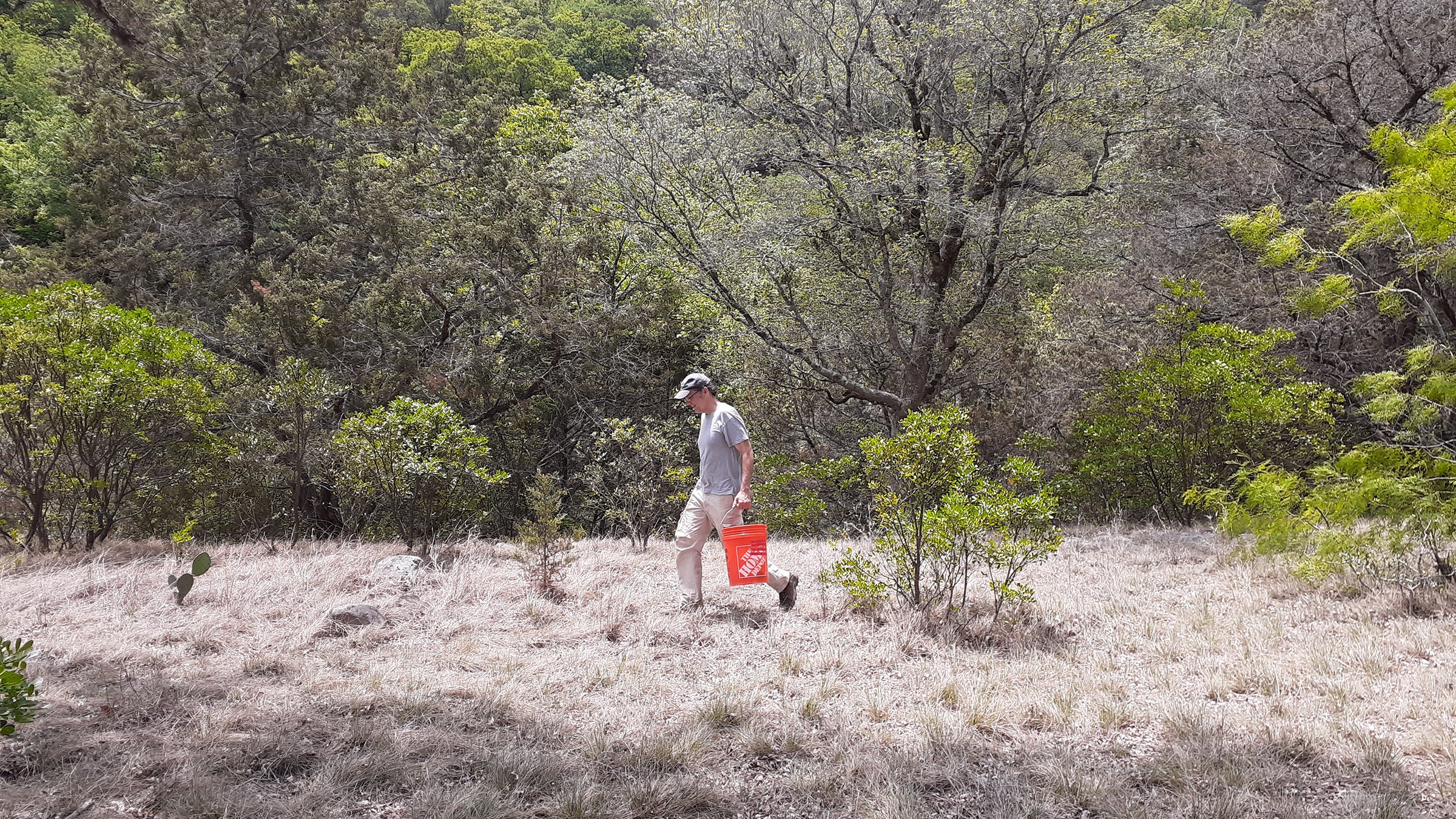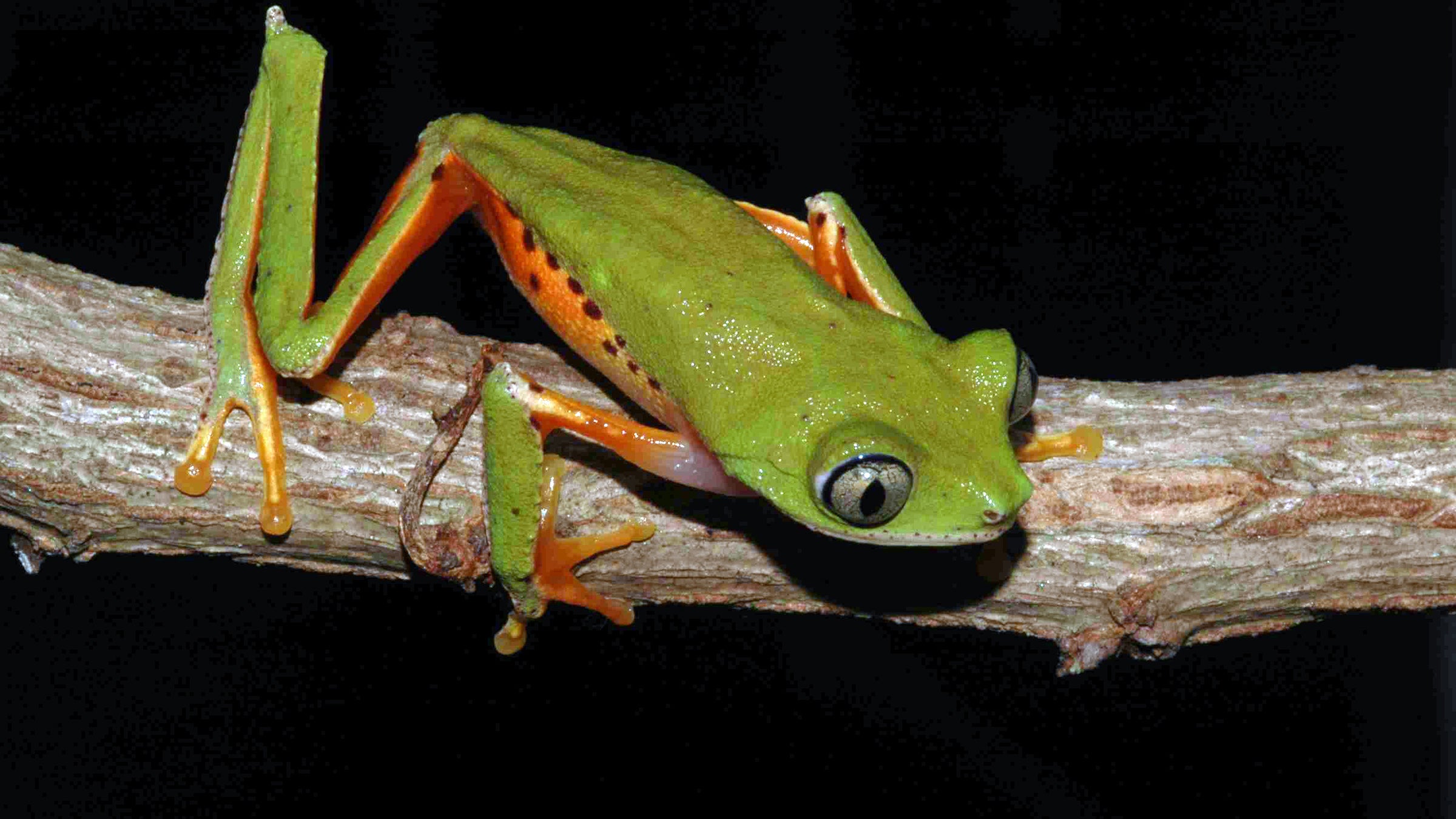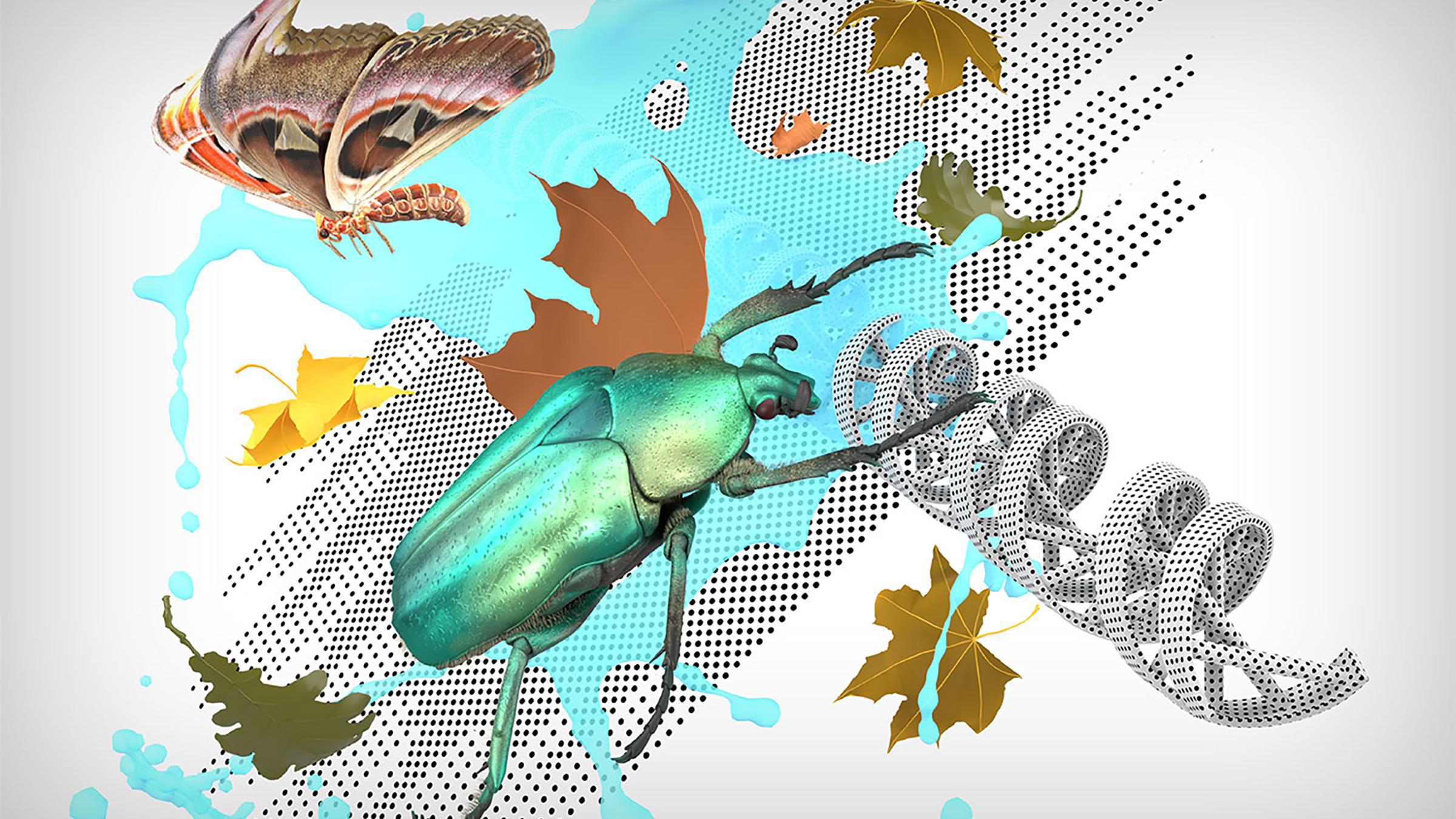
Butterflies never fail to fascinate young and old alike. They are the subject of countless paintings, poems, and for Professor James Glavan's (Head of the Costume Technology program in the Department of Theatre and Dance) class, Fabric Dyeing and Painting, they were the focus of an ambitious costume building project this spring semester.
The goal of the class was to teach students how to both dye and paint fabric, essential skills in the industries of theater and live entertainment. What better place to start than with Central Texas native butterflies that come in a wide array of colors?
Professor Glavan found inspiration for this project via UT’s Pollinator Gardens. In order to find what butterflies might be visiting this area of campus, Professor Glavan reached out to Jennifer Hrobar, Supervisor of Urban Forestry in UT’s Landscaping Services. From her provided resources, Professor Glavan offered his students different native butterflies to choose from. The seven butterflies that made the cut were: Gulf Fritillary (Agraulis vanillae), Pipevine Swallowtail (Battus philenor), Red Admiral (Vanessa atalanta), Eastern Tiger Swallowtail (Papilio glaucus), American Lady (Vanessa virginiensis), Common Mestra (Mestra amymone), and Cloudless Sulfur (Phoebis sennae).

Butterfly inspiration! Top row, left to right: American Lady (Vanessa virginiensis), Common Mestra (Mestra amymone), Eastern Tiger Swallowtail (Papilio glaucus), Cloudless Sulfur (Phoebis sennae). Bottom row, left to right: Gulf Fritillary (Agraulis vanillae), Pipevine Swallowtail (Battus philenor), Red Admiral (Vanessa atalanta). (Photo credits at bottom of article.)
There were seven teams of students, two per team, each with their own butterfly. The processes involved in constructing these costumes over the semester was quite detailed. Starting in February 2022, the students began research on their butterflies, matched color schemes, then did initial sketches either freehand or in Adobe Illustrator. They would then mock up smaller models to test functionality and anticipate any problems, then begin the final costume using no more than seven yards of silk.

Left to right: A student applies the dye to the silk. Middle: detail of dye. Right: the "back pack" on which the wings are attached.
Challenges were plenty. The color was Jacquard Fiber Reactive dye, not a paint. Dye tends to be more fluid than paint, so the students had to be sure about where they were applying the dye. With the wing materials being silk, the dye could start spreading in an unintended way. The students had to learn many techniques on how to get the dye to behave how they wanted. Also, the physiology of the butterflies proved challenging. The near symmetry of the butterfly wings made the application of the dye on one wing difficult to duplicate on the other. The dyeing was certainly one of the most time-consuming aspects.
Another problem-solving challenge was how to structure these wings around the wearer’s body while maintaining the true shape and details of the butterfly, in addition to having the ability to make the wings move. This required a hand-made “back pack” of sorts that needed to be both sturdy and comfortable. Delrin rods and swivel clips would attach the wings to the back packs and further modifications were made from there. For the wings, students could choose from a variety of ways to secure the edging, from pearl edging to bias binding. The wearer could manually move the wings via carbon fiber kite rods attached to the wings.
Most of the students worked over 9 hours per week for these 8 week projects. In these long hours, students learned how to independently problem solve, budget time and resources. All valuable skills for future projects they will take on outside of their education at UT.
These costumes were part of the April 23 Earth Day 2022 festivities at Huston-Tillotson University. The costumes will be donated to Professor Karen Maness at the College of Fine Arts, to be used in future activities supporting the preservation of Waller Creek.
Click here to check out our Facebook photo album for more photos!
Creative Comons butterfly photo credits: American Lady (Vanessa virginiensis) - Christina Butler. Common Mestra (Mestra amymone) - Anne Toal. Eastern Tiger Swallowtail (Papilio glaucus) - Ryan Hodnett. Cloudless Sulfur (Phoebis sennae) - Charles J. Sharp. Gulf Fritillary (Agraulis vanillae) - Charles J. Sharp. Pipevine Swallowtail (Battus philenor) - Judy Gallagher. Red Admiral (Vanessa atalanta) - Andrew Curtis.



